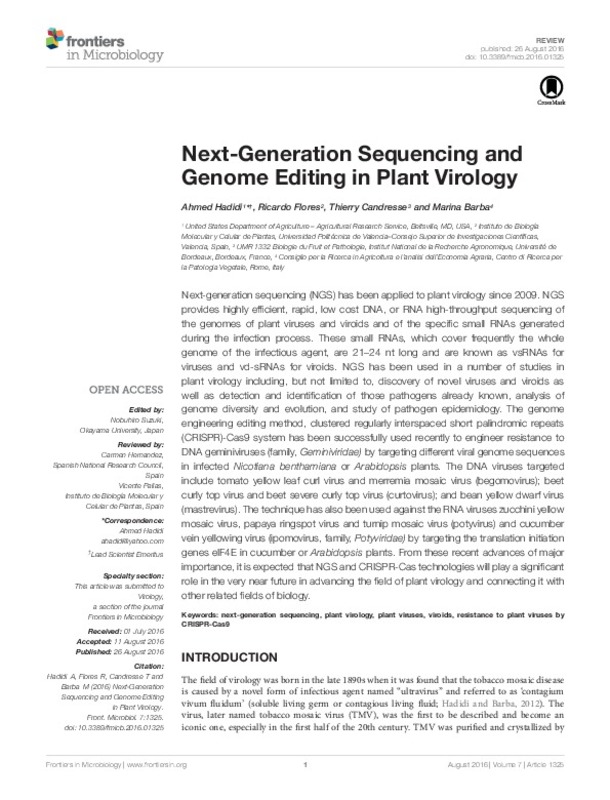JavaScript is disabled for your browser. Some features of this site may not work without it.
Buscar en RiuNet
Listar
Mi cuenta
Estadísticas
Ayuda RiuNet
Admin. UPV
Next-generation sequencing and genome editing in plant virology
Mostrar el registro completo del ítem
Hadidi, A.; Flores Pedauye, R.; Candresse, T.; Barba, M. (2016). Next-generation sequencing and genome editing in plant virology. Frontiers in Microbiology. 7:1-12. https://doi.org/10.3389/fmicb.2016.01325
Por favor, use este identificador para citar o enlazar este ítem: http://hdl.handle.net/10251/80998
Ficheros en el ítem
Metadatos del ítem
| Título: | Next-generation sequencing and genome editing in plant virology | |
| Autor: | Hadidi, Ahmed Candresse, Thierry Barba, Marina | |
| Entidad UPV: |
|
|
| Fecha difusión: |
|
|
| Resumen: |
[EN] Next-generation sequencing (NGS) has been applied to plant virology since 2009. NGS provides highly efficient, rapid, low cost DNA, or RNA high-throughput sequencing of the genomes of plant viruses and viroids and of ...[+]
|
|
| Palabras clave: |
|
|
| Derechos de uso: | Reconocimiento (by) | |
| Fuente: |
|
|
| DOI: |
|
|
| Editorial: |
|
|
| Versión del editor: | http://dx.doi.org/10.3389/fmicb.2016.01325 | |
| Código del Proyecto: |
|
|
| Agradecimientos: |
Work in RF laboratory has been supported by the Spanish Ministerio de Economia y Competitividad (grant BEU2014-56812-P), and in MB laboratory by Consiglio per la Ricerca in Agricoltura e l'analisi dell'Economia Agraria (CREA).[+]
|
|
| Tipo: |
|









